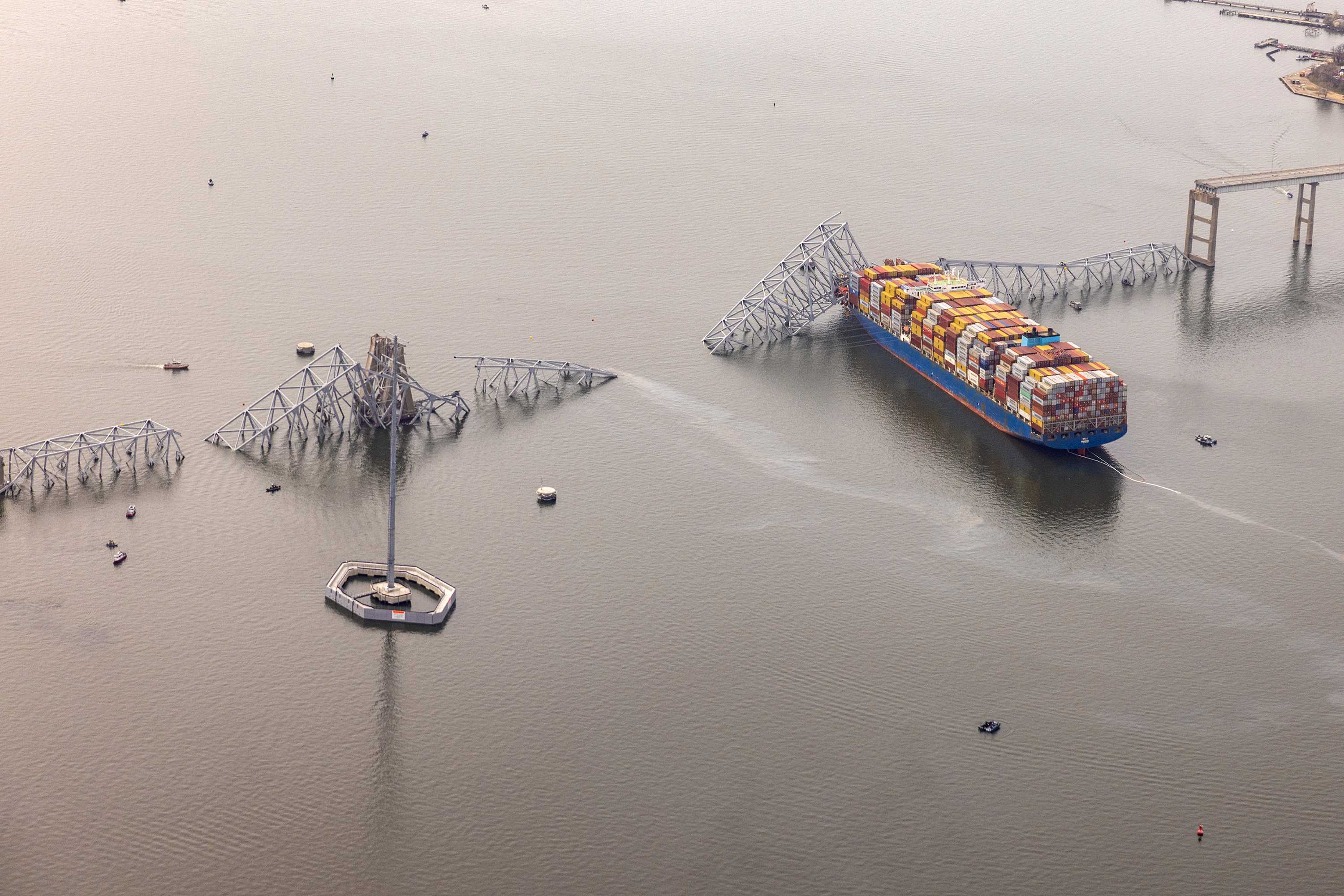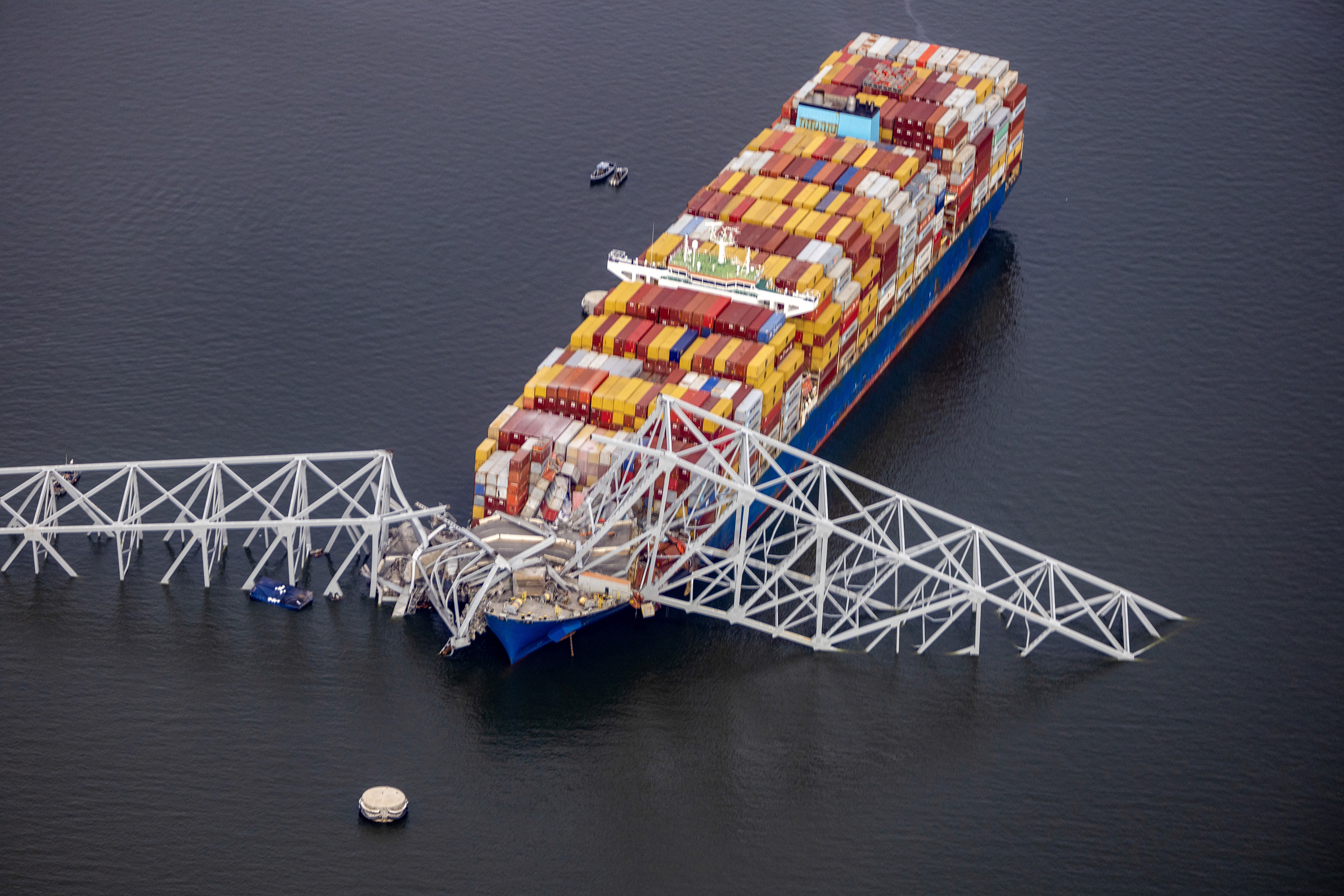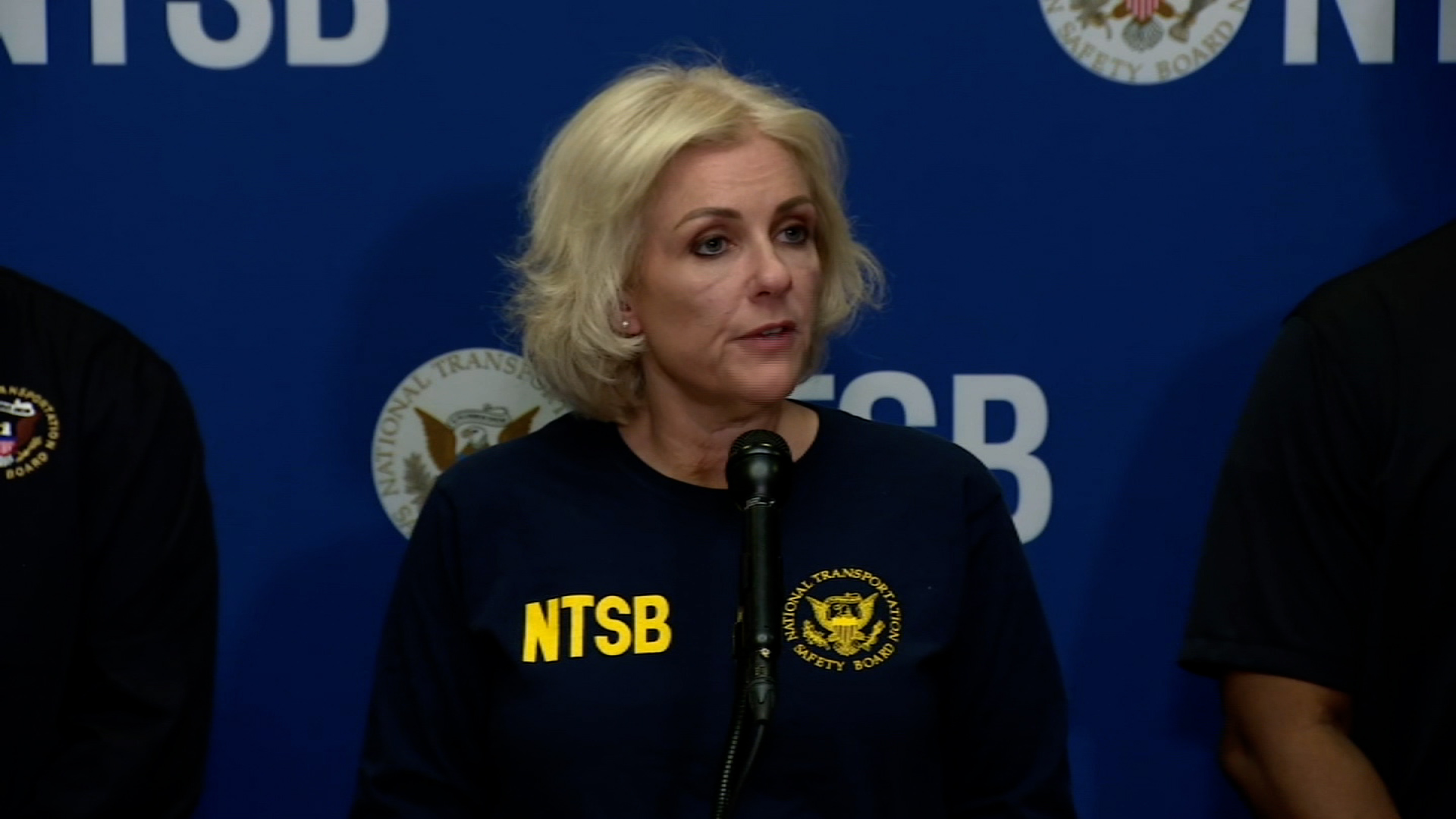
Marcel Muise, the National Transportation Safety Board investigator in charge, provided the following timeline of events as provided by the recovered voyage data recorder (VDR).
- Approximately 12:39 a.m. ET: The ship departed from Seagirt Marine Terminal.
- By 1:07: The ship had entered the Fort McHenry Channel.
- 01:24:59: Numerous audible alarms were recorded on the ship's bridge audio. About the same time, VDR sensor data ceased recording. The VDR audio continued to record using the redundant power source, Muise said.
- 01:26:02: VDR resumed recording sensor data and during this time, steering commands and rudder orders were recorded on the audio.
- 01:26:39: The ship's pilot made a general very high frequency (VHF) radio call for tugs in the vicinity to assist. About to this time, Muise said, the pilot association dispatcher phoned the Maryland Transportation Authority (MDTA) duty officer regarding the blackout.
- Around 01:27:04: The pilot ordered the Dali to drop the port anchor and ordered additional steering commands.
- Around 01:27:25: The pilot issued a radio call over the VHF radio, reporting that the Dali had lost all power and was approaching the bridge. Around this time, the MDTA data shows the following also occurred: Their duty officer radioed two of their units that were already on scene due to construction on the bridge — one on each side of the bridge — and ordered them to close traffic on the bridge. All lanes were then shut down by MDTA.
- Around 01:29: The ship's speed over ground was recorded at just under 8 miles per hour. From this moment on approximately 1:29:33, the VDR audio recorded sounds consistent with the collision of the bridge. Additionally, around this time, MDTA dash cameras show the bridge lights extinguishing.
- 01:29:39: The pilot reported the bridge down over the VFH radio to the Coast Guard.




